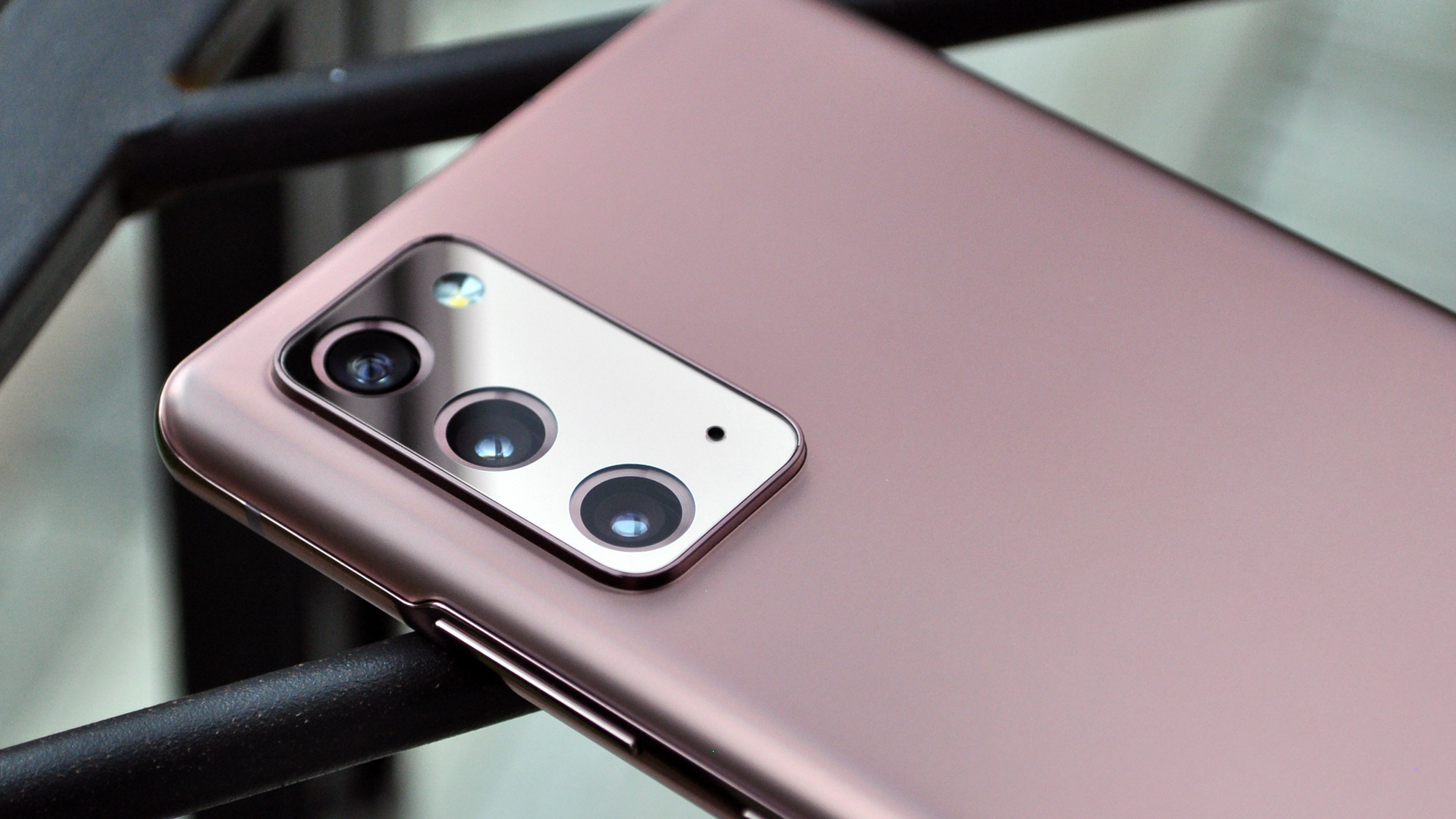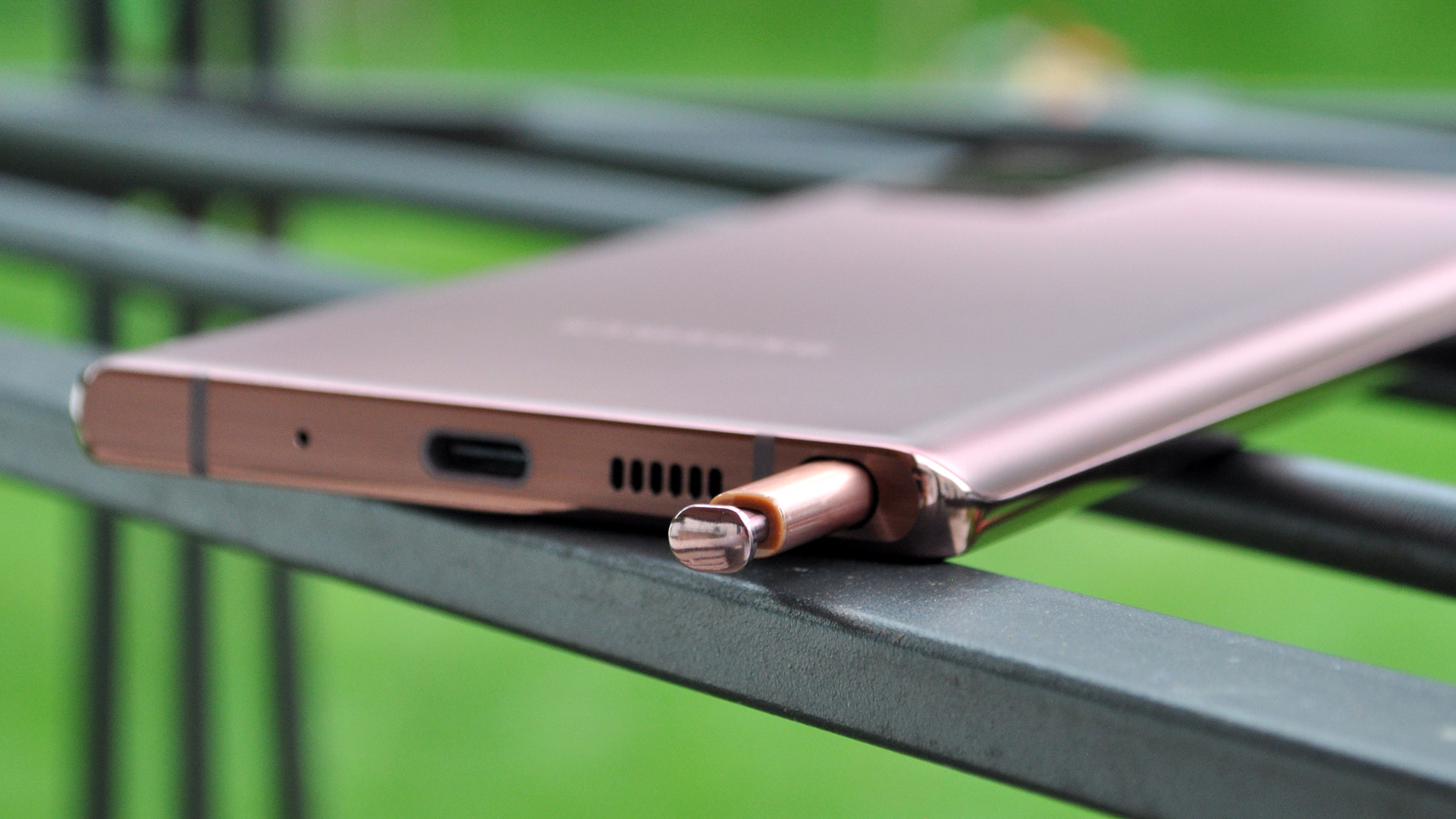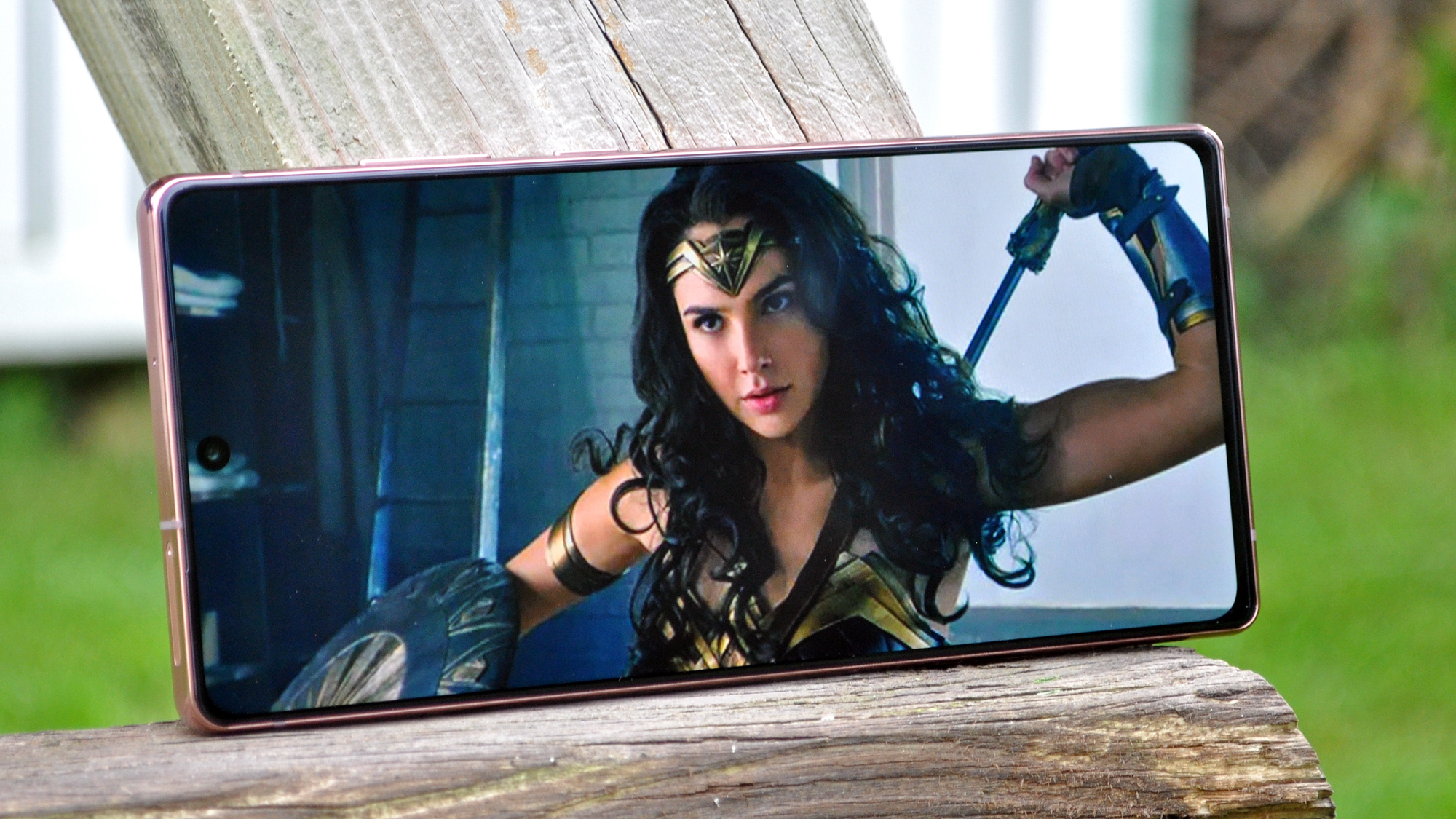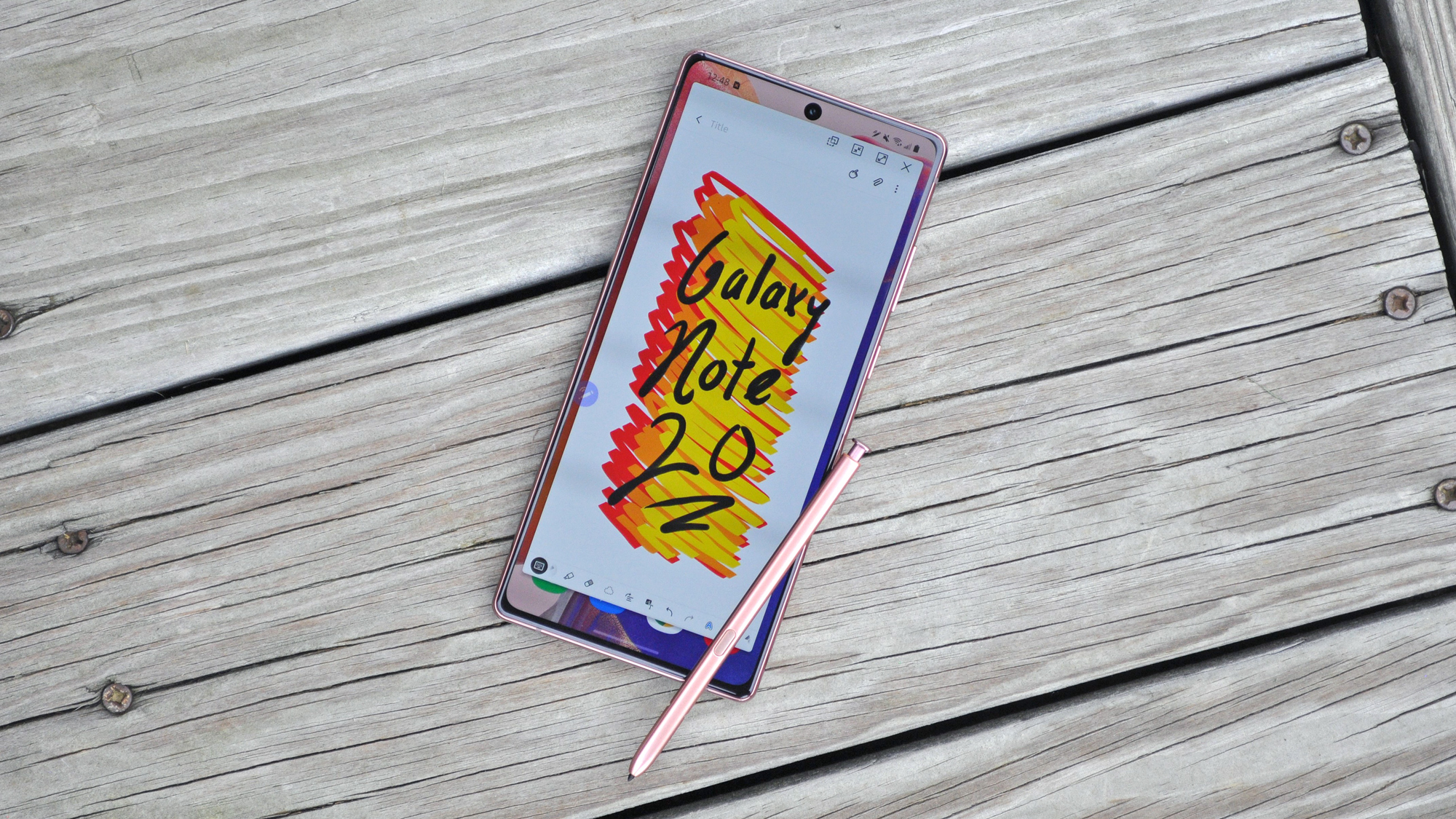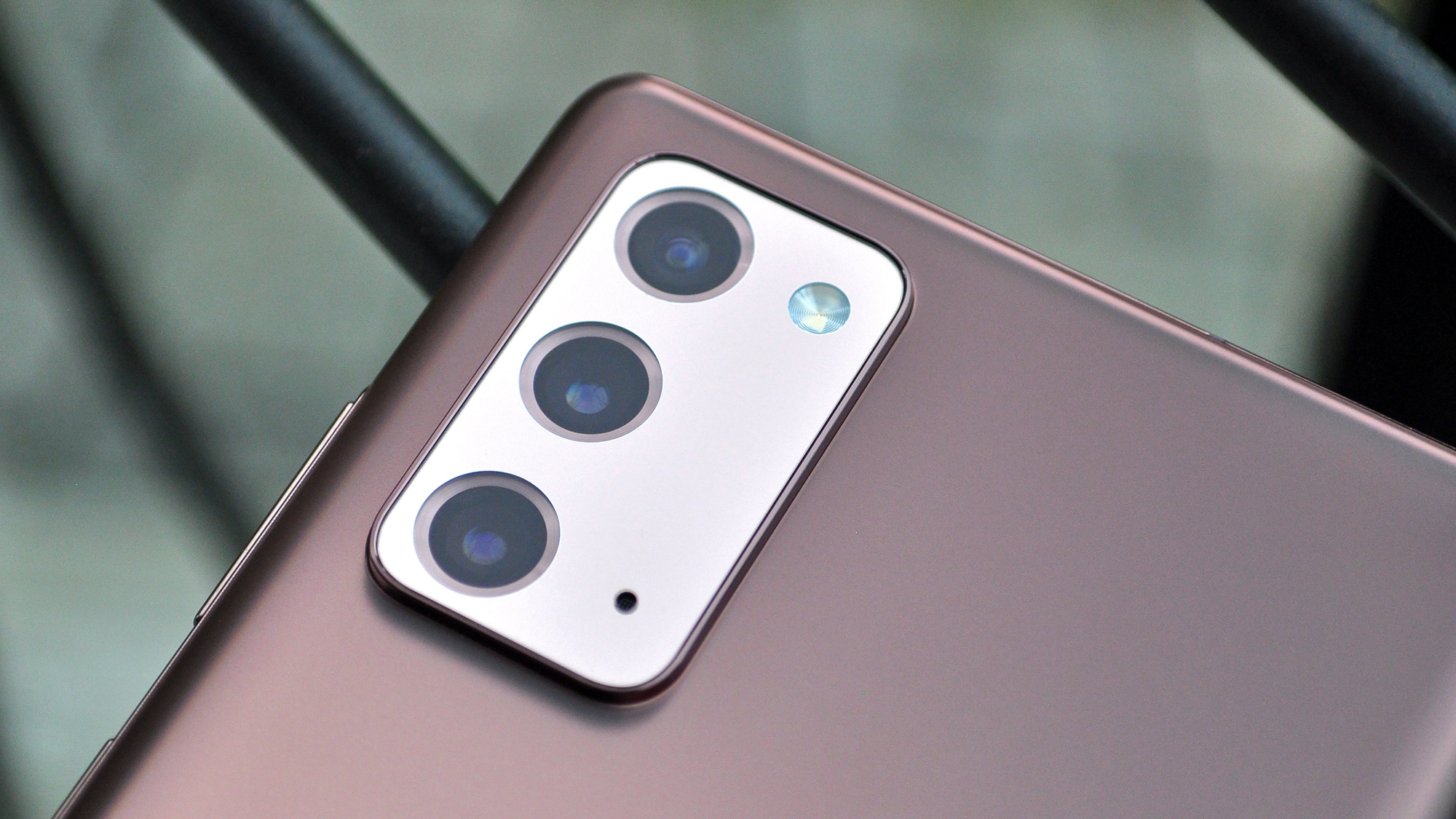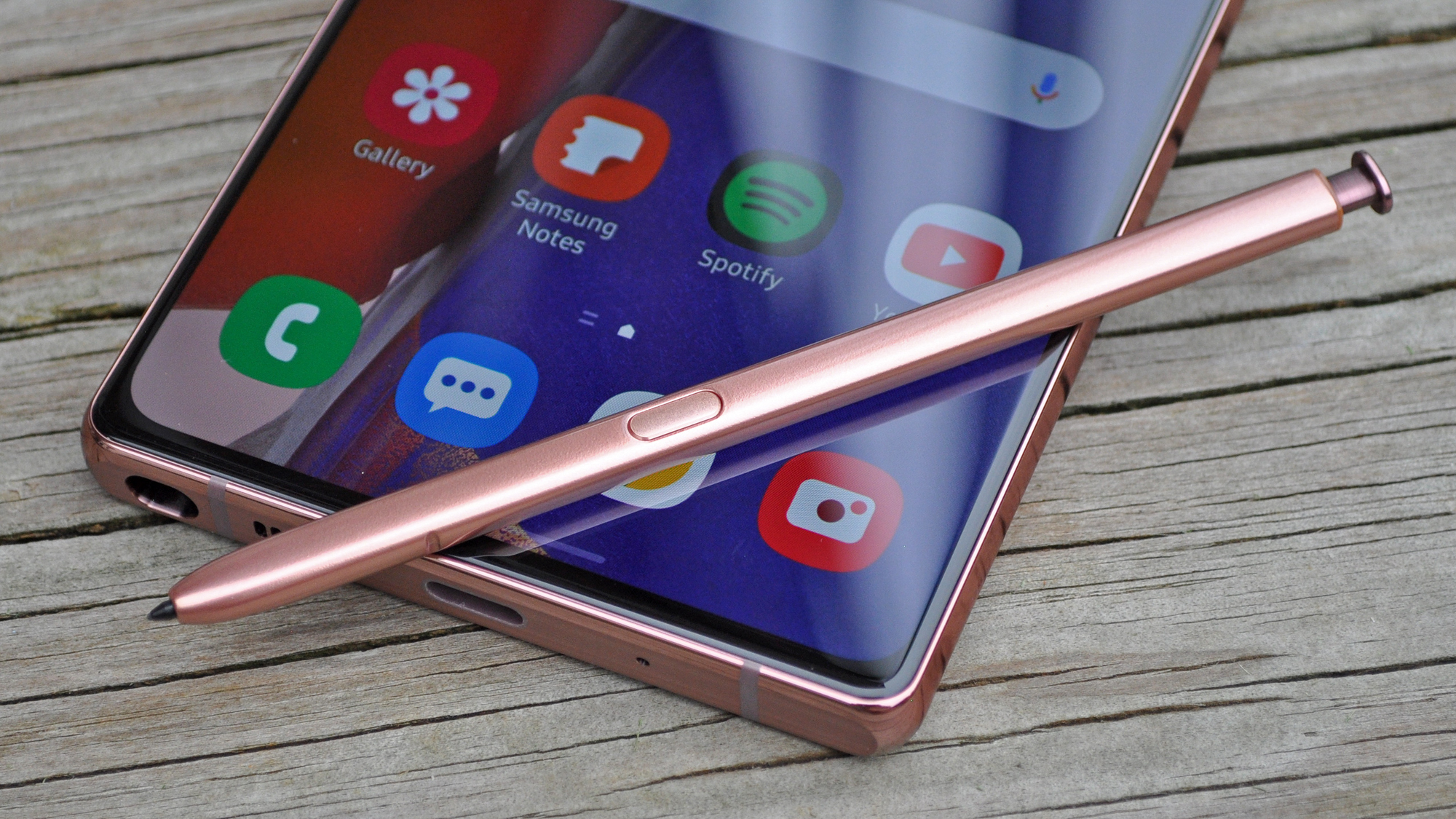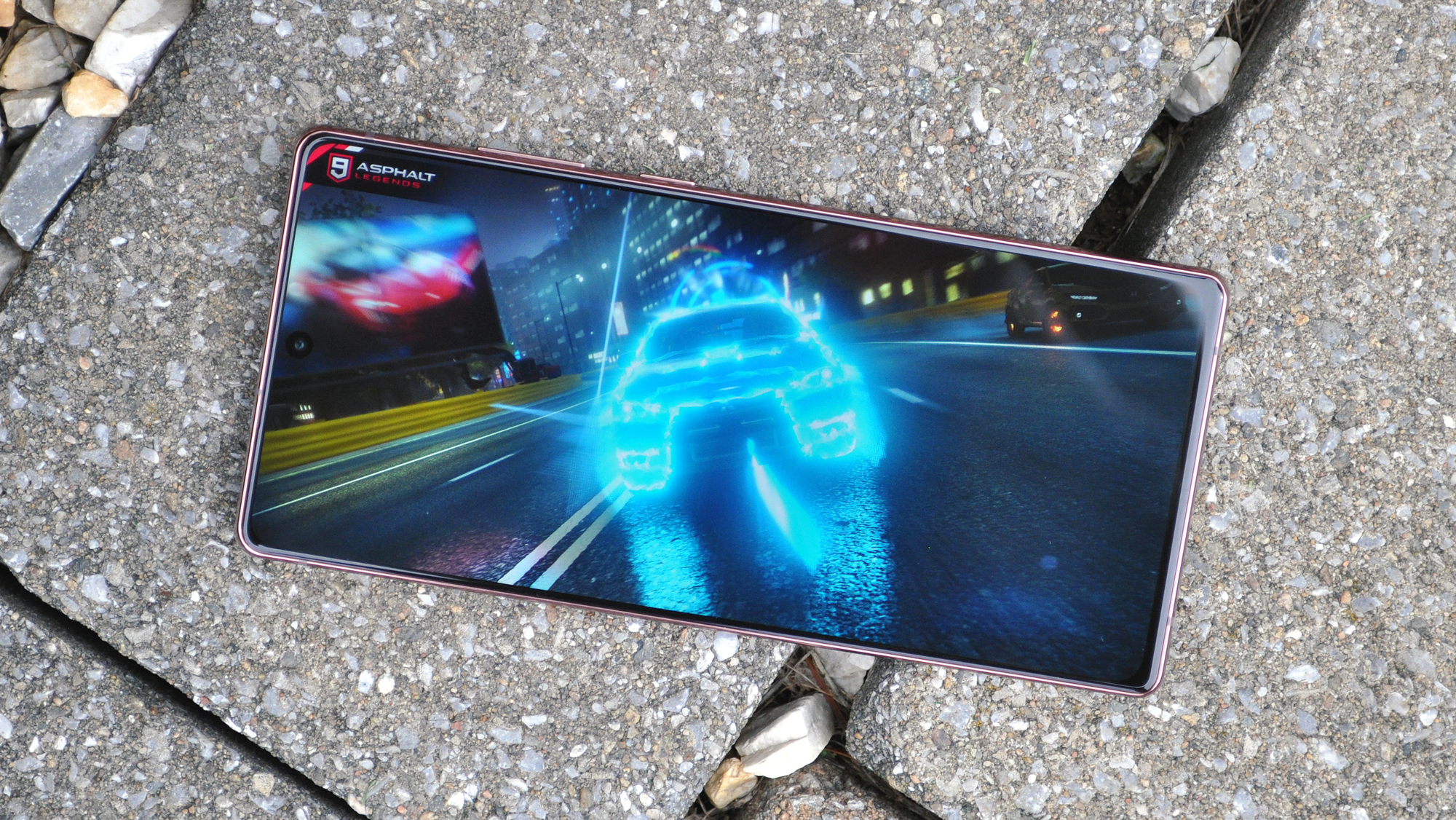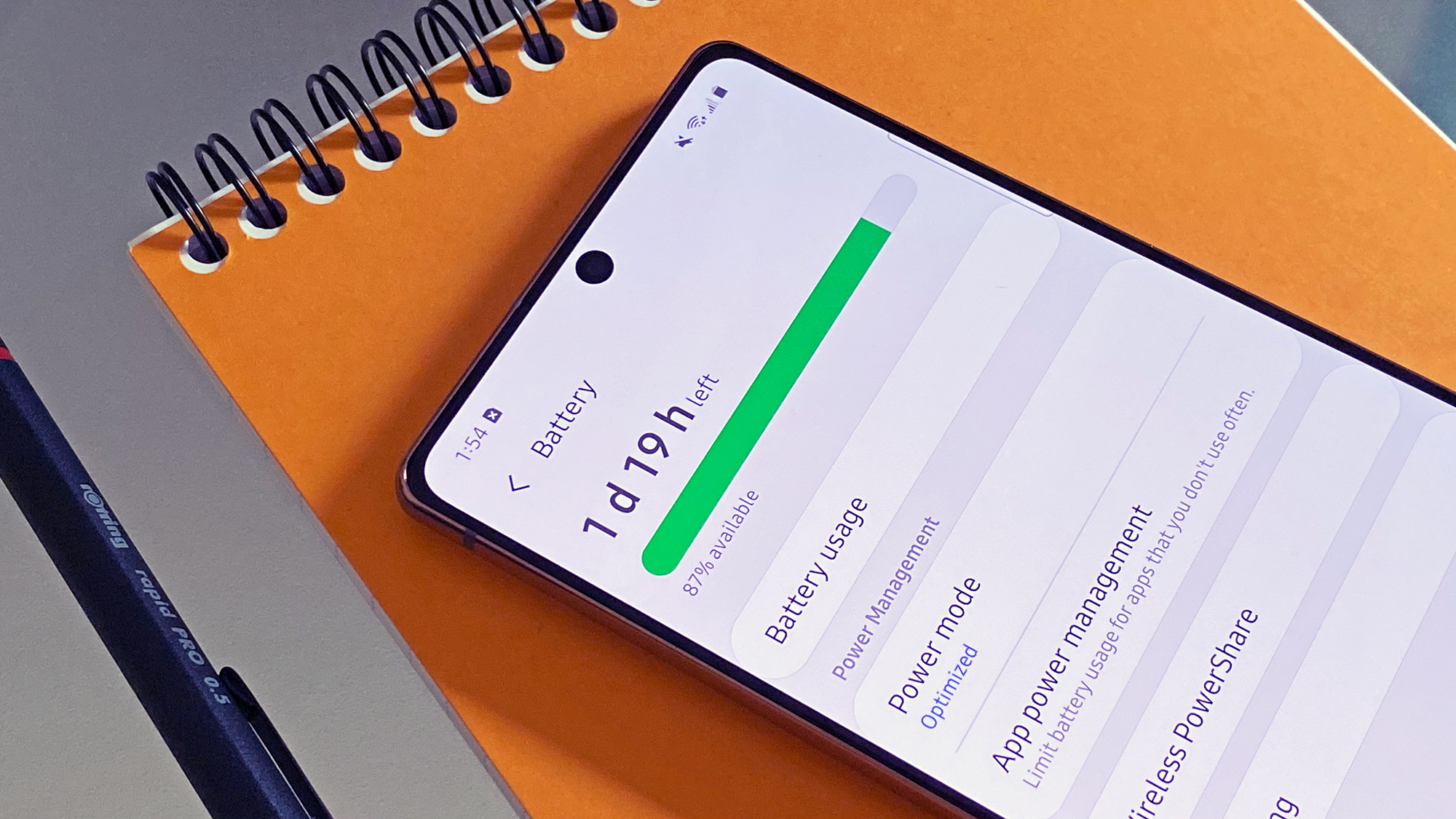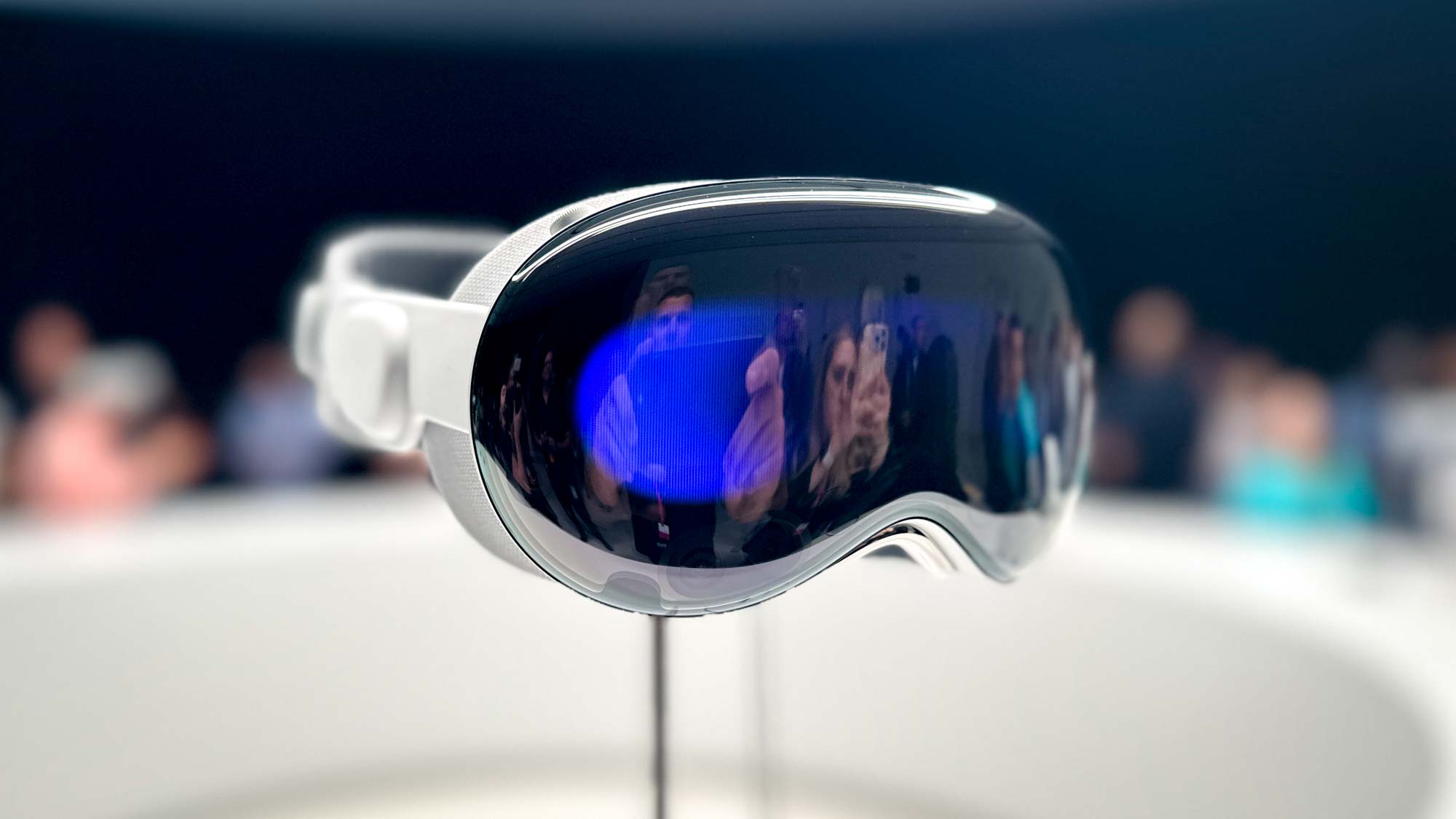Tom's Guide Verdict
The Samsung Galaxy Note 20 offers all the utility of the Galaxy Note 20 Ultra without some bells and whistles to come in at a more acceptable price, making it a more practical choice for buyers primarily concerned with productivity.
Pros
- +
Fantastic camera
- +
Attractive design
- +
Useful note-taking features
- +
Excellent performance
Cons
- -
Battery life just okay
- -
Display only 60Hz
- -
PC projection a bit clunky
Why you can trust Tom's Guide
Price: $999
OS: Android 10 with One UI 2.5
Display: 6.7-inch AMOLED (2400x1080; 60Hz)
CPU: Snapdragon 865 Plus
RAM: 8GB
Storage: 128GB; not expandable
Rear camera: Triple-lens: 12MP wide (ƒ/1.8); 64MP telephoto with 3x lossless zoom (ƒ/1.8); 12MP ultrawide (ƒ/2.2)
Front camera: 10MP (ƒ/2.2)
Battery: 4,300 mAh
Size: 6.36 x 2.96 x 0.32 inches
Weight: 6.77 ounces
It’s easy to forget about the Samsung Galaxy Note 20. Oh, sure — the $1,299 Galaxy Note 20 Ultra is impossible to overlook, with its 6.9-inch adaptive 120Hz display, meticulous glass-and-metal design and absurd triple-camera bump. But the regular Note 20 has none of those things, leading some to dismiss it — perhaps unfairly — as a cut-rate afterthought in Samsung’s roster of premium handsets.
Let it be known I was among those guilty of writing off the Note 20 when it was unveiled. However, while the $999 Note 20 offers fewer of those head-turning features than its pricier sibling, it’s appropriately less expensive as well, by $300.
That’s not a small chunk of change these days. And ultimately, if you’re buying one of Samsung’s new Notes to get things done more efficiently, the cheaper Note 20 gives up nothing on the Ultra. You still get the same powerful Snapdragon 865 processor, versatile S Pen and Samsung’s latest and greatest productivity-minded software, from the new Notes app to wireless DeX Mode projection.
If you absolutely need the best camera and display in your phone, the Note 20 Ultra is waiting for you. But if you don’t mind sacrificing on those fronts to get the same great workhorse for less, there is absolutely nothing cut rate about the regular Note 20 except its price.
Continue on in our Samsung Galaxy Note 20 review to find out why this is one of the best phones you can buy today.
Samsung Galaxy Note 20 review: Release date and price
The Galaxy Note 20 costs $999 and only comes in one configuration, with 8GB of RAM and 128GB of non-expandable storage. For reference, the Note 20 Ultra, which packs expandable storage as well as a larger display and battery, among other features, starts at $1,299.
The regular Note 20 originally appeared in three colors: Mystic Bronze, Mystic Green and Mystic Gray; at the end of November, Samsung added a new Mystic Red option. This device supports 5G, and you can buy it through any major carrier or unlocked to take it to the network of your choice.
Get instant access to breaking news, the hottest reviews, great deals and helpful tips.
- Samsung Galaxy Note 20 Ultra vs OnePlus 8 Pro: Which phone wins?
Samsung Galaxy Note 20 review: Design
Let’s get this out of the way first: Yes, the Galaxy Note 20 has a plastic back instead of a glass one. No, it doesn’t matter.

Samsung has done a great job of emulating the fit, finish and appearance of matte glass with the Note 20’s matte plastic, which the company dubs “reinforced polycarbonate.” In fact, the only way you’d be able to tell it isn’t glass is by tapping it with your fingernail — the resulting sound is softer and more hollow, as it tends to be with plastic.
Nevertheless, you can rest assured that nothing about the material Samsung has chosen for this model looks or feels flimsy or cheap. In fact, it only benefits the Note 20’s durability, as plastic certainly won’t shatter like even the finest Gorilla Glass does. Samsung also claims the Note 20’s material is less prone to fingerprints than glass tends to be, which definitely held true in my experience.
Amidst the concerns over the use of plastic, it’s worth confirming that the Note 20’s frame is still made of chromed metal, trimmed with brushed edges along the top and bottom that add yet more class to the whole affair. That keeps this phablet’s rigidity in check, while also complementing the frosted sheen of the back very well. Truth be told I expected to be underwhelmed by this phone’s design; I’m pleased to report that hasn’t been the case.
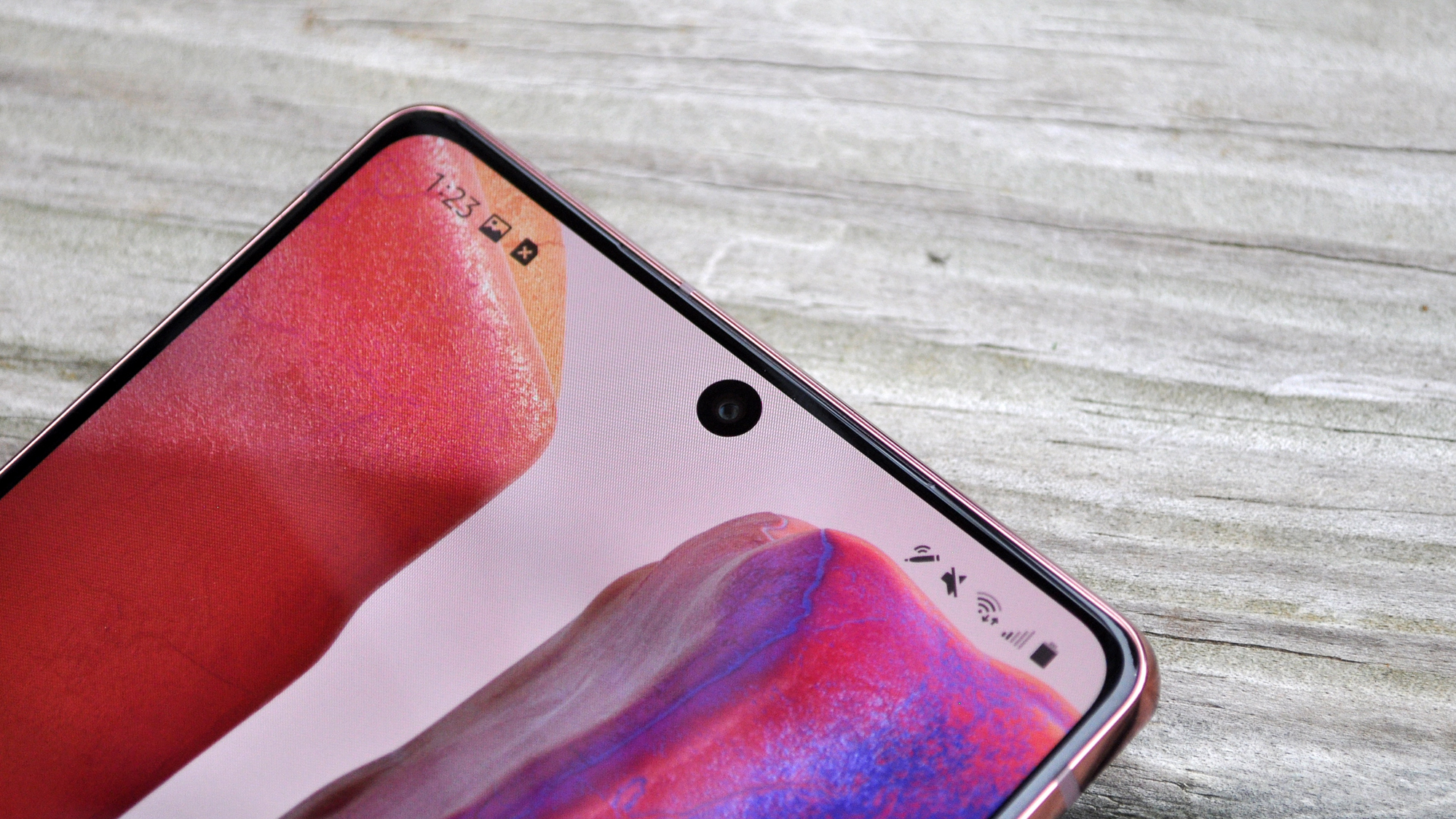
As for the rest of the Galaxy Note 20, the bezels encircling the screen are scant as can be, yet the glass shrouding the panel is flat. That might sound less luxurious than the Note 20 Ultra’s curved display, but it actually diminishes the likelihood of unintentional taps.
Despite the Note 20’s big 6.4-inch screen, this phone doesn’t feel any heavier than the 5.8-inch iPhone 11 Pro I usually carry around, even if the spec sheet tells me it’s a tenth of an ounce heavier than Apple’s flagship. I tend to gravitate toward smaller phones, and at 2.9 inches tall — a hair taller than the Galaxy S20 Plus — the Note 20 about reaches the limit of what I could conceivably live with.
Like all Samsung’s recent high-end phones, the Galaxy Note 20 is rated IP68 water resistant. That’s always impressive to me, considering the massive openings these phones have to house the S Pen.
Samsung Galaxy Note 20 review: Display
It’s hard not to be a little underwhelmed by the Galaxy Note 20’s display, at least on paper. This 6.7-inch 2400 x 1080 panel has but a conventional 60Hz refresh rate, which is disappointing considering you can find 90Hz screens in devices that cost as little as half what the Note 20 does, like the OnePlus Nord.
Alas, the cheaper of Samsung’s new phablets can still dazzle with impressive color, contrast and brightness, even if the animations aren’t as smooth as you’d expect from a modern $999 device.
The trailer for the bleak new Batman film presented a brilliant showcase for the Note 20’s impressive dynamic range, as explosions, gunfire and street lights shone through a desolate and dim Gotham City. Say what you want about Robert Pattinson’s “emo” take on the caped crusader, but something tells me Batman's new look will pair excellently with the perfectly-inky blacks of the Note 20’s AMOLED panel.
This display might not move as swiftly as others, but it does react quicker to S Pen inputs than the Galaxy Note 10 did. Samsung has shortened up latency between the screen and stylus to 26ms, which makes for a 40% improvement over the outgoing model. Unfortunately it’s still a ways off from the Note 20 Ultra’s near instantaneous 9ms response rate, though.
Under our light meter, the Note 20 was able to render 122.8% of the sRGB color space in its Natural configuration, as well as a Delta-E color accuracy score of 0.22. That’s damn near identical to the Note 20 Ultra, which achieved 121.5% and 0.24 in both tests, respectively — indicating the quality of onscreen hues will be more or less the same even if you opt for the less expensive device.
Sadly, we can’t say the same rings true for brightness. The Note 20 topped out at just 587 nits in our full-screen brightness test, compared to the 662 nits of the Note 20 Ultra and 752 nits of the iPhone 11 Pro Max. These days, the finest OLED panels can routinely top 700 nits, so the regular Note 20 unfortunately presents a slight step backward in this regard.
Samsung Galaxy Note 20 review: Camera
While the Galaxy Note 20 lacks the 108-megapixel primary sensor and 50x Space Zoom capability of the pricier Note 20 Ultra, its triple-lens camera stack still produces excellent results all around.
Most of the time, you’ll be shooting with the Note 20’s ƒ/1.8, 12MP main lens. That camera is flanked by a 64MP telephoto with 3x lossless zoom (not optical zoom, mind you — it’s just a sensor crop) as well as another 12MP optic for ultrawide shots.
Even despite the Note 20’s deficiencies on paper compared to the Ultra, this is still a supremely capable mobile camera that routinely equals — if not betters — the iPhone 11 Pro in several side-by-side comparisons. Looking at this first example, showing off an idyllic river scene, it’s honestly hard for me to choose a favorite. The contrast and verdant greens in the Note 20’s shot are more captivating, but the iPhone handles the color of the sky better. The perfect photo would comprise elements of both.
As dusk set in, I captured this pair of images near an overpass. Samsung’s algorithms are clearly more aggressive in brightening darker hues in scenes, yet the Note 20’s attempt has more obvious contrast as well, particularly within the shadows of the tall grass at the bottom left. Ultimately, I prefer everything about the Galaxy’s attempt, again save for the sky and cloud above, which the iPhone once again captures with more depth, realism and nuance.
This comparison, taken from within a covered bridge on a sunny day, was particularly challenging for both devices. It requires each device to expose for the dim conditions inside the bridge, without blowing out the intense sunlight at the opening. Comparing both, it’s clear to see the Note 20 handled this task better — you can suss out some of the trees past the threshold, and pick out more detail in the wooden floorboards all the way to the bridge’s end. The iPhone is unable to navigate this photographic minefield as well.
Using both phones’ telephoto lenses, I snapped a pair of images of a flower. It may be hard to see in the slider above, but the iPhone retains more sharpness and detail than the Note 20 here, and also is less susceptible to blowing out the highlights on the petals. Each image is very, very good, but Apple’s rendition is a hair better.
On the flip side, the Note 20 becomes the vastly better camera when zooming in from afar. Apple’s digital zoom still doesn’t incorporate demosaicing algorithms, like you see in many Android devices today, including Samsung’s latest flagships. (This is the same technique that gives Google’s Pixels their Super Res Zoom.) Using clever software, the Note 20 is able to reconstruct images in a way that makes digital zoom far sharper than it would be normally, allowing it to capture a cleaner, crisper and less noisy picture of this flag amidst a sea of cornfields at 10x power. In fact, the Note 20 can get all the way up to 30x if you let it.
Apple’s Night Mode is typically our favorite of all modern phone makers’ low-light shooting modes, but the Note 20 surprisingly topped the iPhone’s best efforts here. The image from Samsung’s phablet is sharper and less grainy, with more gradation in color, especially looking at the tree to the right and the lawn below. Apple’s software glosses over everything in sepia tones, producing a roundly blurrier and less precise result.
To test out how these phones handle shallow depth-of-field portraits, I captured a couple of selfies — only to find that I’m not going to be posting my mug to social media from the Note 20’s 10MP front-facing camera anytime soon. Samsung still hasn’t totally figured out how to properly render people’s skin tones without producing ghostly consequences, even when I turned off all the face beautifying and smoothing features. It’s the Note 20’s only glaring photography-related drawback.
Samsung Galaxy Note 20 review: S Pen
While the S Pen itself hasn’t changed much since last year’s Note, what you can do with it has. That’s thanks to the new One UI 2.5 update to Samsung’s Android front end.
The most obvious addition in One UI 2.5 is Air Action navigation. While holding the S Pen out in front of the Note 20, you can press down the button on the stylus while moving in an upside down V-shaped motion to return home. Do this in a left or right motion, and you’ll call up recent apps or move backward. Zig zag downward to capture a screenshot.
I suspect Air Actions won’t be all that useful to users who choose to stick with classic three-button navigation, but it is convenient if you have your Note 20 set to Android’s gestural bar system, and you’ve got the S Pen in hand.
One of the Note 20’s best and newest S Pen-related features is the ability to append audio recordings to written or typed notes. Granted, this feature can be a little difficult to figure out how to use the first time out — you have to tap the paperclip icon in the upper right corner, tap voice recordings and then start capturing audio as you jot down a note, rather than before or after. Then, when you go to play that audio back, the Note 20 will highlight aspects of the text in real time that were added during that particular point of recording. It’s a neat and obviously useful feature for anyone taking notes in a meeting or during a lecture, though like most of the clever S Pen features, I wish Samsung made it a bit easier for newcomers to find.
Samsung says it’s punched up its handwriting-to-text transcription in the Note 20 series. To me, this was never an area of great concern — I found the transcription in previous Note devices to be just fine, and the same is true in the Note 20’s case. Personally, I prefer transcription as opposed to handwriting directly within pages, as it keeps things more organized and allows you to fit more on screen, so I appreciate the effort Samsung continues to put into this aspect of the Note experience.
One more update to discuss related to the Notes app — it is now built to sync to the cloud and be accessible from any device, whether that’s another Samsung phone or tablet, or your PC. Unfortunately however, the desktop Samsung Notes app is only available for Samsung PCs, which certainly limits its impact. Syncing to Microsoft OneNote is also supported, though only in one direction, from Samsung Notes to OneNote.
One UI 2.5 is launching on the Galaxy Note 20 and Note 20 Ultra, though it won’t remain exclusive to Samsung’s latest phablets for long. You can expect many of these features to drop on the Galaxy S20, Galaxy S10 and Note 10 series as well, where applicable, once One UI 2.5 rolls out to them. That’s great news for existing Samsung owners, though it hardly makes a good case for upgrading to the Note 20 if you already have one of those recent handsets.
Samsung Galaxy Note 20 review: Performance
Armed with Qualcomm’s Snapdragon 865 Plus, the Galaxy Note 20 tears through any and all tasks, from running demanding games to taking notes while streaming YouTube or music from Spotify. It’ll surely finish as one of 2020’s most powerful Android phones when all is said and done, even if 2021 is already starting off strong.
Playing arcade racer Asphalt 9 on the Note 20 was a somewhat eye-opening experience. I’m accustomed to encountering some dropped frames and stuttering here and there with this title, even on the most powerful Android phones. However, the 865 Plus’ overclocked GPU delivers buttery-smooth gameplay, making the Note 20 a suitable device for gaming (so long as you’re not dismayed by the ordinary refresh rate.)
There have been reports of some Galaxy Note 20 Ultra models getting too hot, too quickly, due to differences in the heat management system on a per-device basis. I am not sure what’s inside our particular Note 20 (for what it’s worth, we bought it ourselves rather than use a Samsung-provided review unit), but it didn’t get unreasonably toasty in my experience. Using turn-by-turn navigation, streaming a YouTube video and running Live Caption concurrently at full brightness did cause the back to warm up a bit, though that’s true of pretty much any phone.
Turning to benchmarks, the Note 20 totaled 3,182 points on the multi-core portion of the system-wide Geekbench 5 assessment — a shade behind the Note 20 Ultra’s 3,294 result, likely explained by the regular Note 20’s 8GB of RAM to the pricier model’s 12GB. This is very good, though it’s worth pointing out the year-old iPhone 11 Pro Max still beats all Android phones, hitting 3,500 points thanks to Apple’s blazing-fast A13 Bionic silicon. And we did our Note 20 testing before the iPhone 12 came out — the A14 Bionic iPhone 12 Pro Max expands the performance gap even further by posting a multi-core score of 4,111 on Geekbench 5.
In terms of graphical performance, the Note 20 achieved 22 frames per second and 1,446 frames in total in GFXBench’s Vulkan-based Aztec Ruins test for high-tier devices. That’s slightly faster than the OnePlus 8 Pro (20 fps; 1,313 frames) but a shade behind the iPhone 11 Pro Max once again (25 fps; 1,657 frames).
The Note 20 is about as fast as phones get these days, though there is one frustrating sticking point concerning its specs. This device only comes with 128GB of built-in storage, and there’s no microSD slot for expandability. That’s a bitter compromise for buyers of the cheaper Note, and certainly a reason to consider the Ultra variant, which offers more optional storage as well as microSD support.
Finally, a word on the Note 20’s 5G connectivity. This phone is compatible with long-range sub-6GHz 5G networks as well as faster but more range-limited millimeter-wave (mmWave) infrastructure. That certainly bodes well for the Note 20 in terms of future-proofing, though, we weren’t able to track down either signal during our time with the device. And even if we had, we wouldn’t anticipate impressive results, as sub-6GHz 5G continues to underperform based on the latest nationwide testing, while mmWave 5G is very fast but strictly limited to densely-packed cities and line-of-sight access.
Samsung Galaxy Note 20 review: Link to Windows and wireless DeX Mode
The Galaxy Note 20 is one of a small number of phones — one of the only others being the upcoming Microsoft Surface Duo — capable of connecting to Windows PCs, allowing you to view and act upon notifications, respond to text messages and even see and interact with your Note’s screen from your computer.
The Your Phone app is rich with features that iPhone and Mac users have been enjoying for years, like the ability to make and receive calls without leaving your desktop. The integration is solid and easy to get up and running once you’ve accepted the flurry of notifications Windows requires to dig its hooks into your Note 20.
It’s generally impressive, though Your Phone begins to fall short when you attempt to interact directly with your Note’s display via Windows. I’ll admit that “swiping” around Android on your PC’s monitor with your mouse is a somewhat bewildering experience the very first time you do it, though that amazement quickly comes crashing down to Earth once you take stock of the blemishes.
For starters, the stream from the Note 20 can be remarkably low resolution — so much so that it’s hard to read elements on screen to click on. Animations often play back at less than half speed, and the entire affair was so slow and muddy when I tried it that I can’t imagine returning to it anytime soon. The culprit could be my local connection of course, though I suspect there’s a reason Apple doesn’t fuss with phone-to-PC wireless mirroring — it’s simply too laggy and prone to hiccups too much of the time.
The Note 20 can also cast its desktop-class DeX Mode wirelessly to Miracast-supported displays. That’s a new feature for DeX; previously, you needed a cable to either project it via a TV or PC.
Unfortunately, I couldn’t get wireless DeX Mode up and running on my Samsung Q-series TV. (This seemed to be more of a problem with the TV than the Note, which refused to let me allow the phone to connect to it.) However, my colleague Mark noted in his Galaxy Note 20 Ultra review that DeX works well enough over Miracast, even if the overall experience isn’t quite as smooth and instantaneous as using the Note directly.
Gamers will appreciate that the Note 20 is supported as part of Microsoft’s $15-per-month Xbox Game Pass Beta program, allowing you to stream Xbox and PC titles to your phone. More than 100 titles are included in the initial run, from Gears 5 to Forza Horizon 4 and Halo: The Master Chief Collection. Eventually, Microsoft will surely extend support to other phones, though the Note 20 models will get in on the ground floor on September 15, when Microsoft flips the switch on Game Pass streaming.
Samsung Galaxy Note 20 review: Battery life and charging
While the Galaxy Note 20 concedes more than a few desirable features to the Note 20 Ultra, battery capacity thankfully isn’t one of them. This device comes with a 4,300mAh unit, which isn’t far off the Ultra’s 4,500mAh capacity. The Note 20’s battery also charges equally as fast, with the included 25W adapter.
The Note 20 lasted an average of 9 hours and 38 minutes in Tom’s Guide’s custom battery test, where the device cycled through an endless list of web pages while connected to AT&T’s LTE network and set to 150 nits of screen brightness.
Compare that to the Note 20 Ultra — which lasted 10:26 on its 60Hz mode, yet only 7:59 on its 120Hz mode — and the regular Note 20 falls unsurprisingly between those extremes. 9:38 is hardly epic though, especially considering the Galaxy S20 Plus notched 10:31 when set to 60Hz, and 2019’s Galaxy Note 10 Plus delivered 10:47.
Longevity on a charge should have been the one upside to the regular Note 20’s 60 Hz display, though it hasn’t seemed to help much. Still, at least the phone recharges quickly enough, taking 30 minutes to reach 55% from completely dead. Additionally, the Note 20 supports 15-watt fast wireless charging as well as the ability to wirelessly charge other devices with Samsung’s PowerShare feature. That’s something iPhones still can’t claim.
Samsung Galaxy Note 20 review: Verdict
The best thing about the Galaxy Note 20 is that it does pretty much everything well. It’s very powerful, excels at productivity and note taking, and sports a pretty (if not entirely cutting-edge) display and design. It’s the complete package.
What it’s missing is that wow factor — something Note 20 Ultra has in spades, between its 120Hz screen, crazy cameras and daunting size. However, I’m not so sure that’s such a bad thing. Tech aficionados and early adopters can empty their pockets for the Ultra, and I suspect they won't be disappointed. However, other buyers drawn to the Note primarily because of the value of the S Pen as a practical tool can get exactly what they want, less some arguably frivolous bells and whistles in the regular Note 20, and save $300 in the process. The only things they stand to lose are storage and a bit of battery life.
Before embarking on this Galaxy Note 20 review, I struggled to pin down who the Note 20 was for, but now I’ve figured it out. If you want to be dazzled with the absolute pinnacle of mobile technology, buy the Note 20 Ultra. But if all you really care about is getting stuff done, the regular Note 20 is here to the rescue.
Adam Ismail is a staff writer at Jalopnik and previously worked on Tom's Guide covering smartphones, car tech and gaming. His love for all things mobile began with the original Motorola Droid; since then he’s owned a variety of Android and iOS-powered handsets, refusing to stay loyal to one platform. His work has also appeared on Digital Trends and GTPlanet. When he’s not fiddling with the latest devices, he’s at an indie pop show, recording a podcast or playing Sega Dreamcast.

